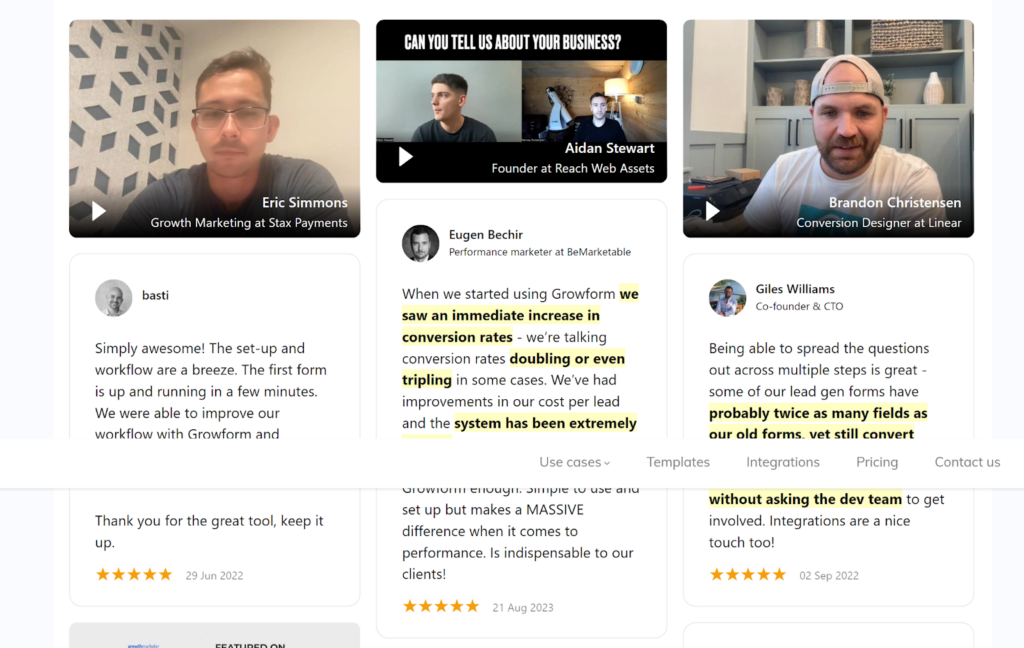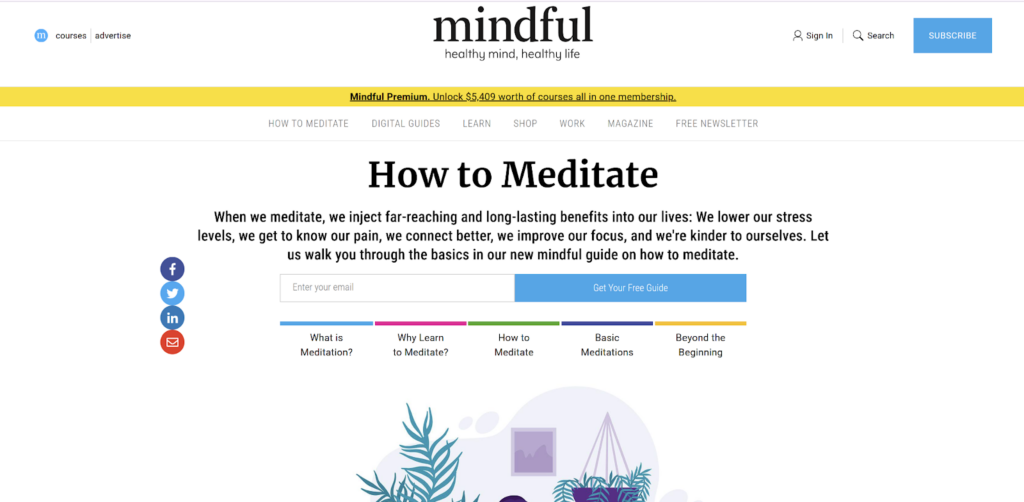Email Validation
« Back to Glossary IndexQuick Summary
This guide explores the importance of email validation in reducing bounces, protecting the sender reputation, and improving email marketing performance. It breaks down key validation methods, including real-time checks, double opt-in, list cleaning, and bounce monitoring, to help businesses maintain accurate, high-quality email lists. Our blog has more insights into how to capture real, high-converting leads–do check it out.
Wondering Why Email Validation Matters for Your Business?
We know that bad email data leads to bounces, spam traps, and lost leads. Every undeliverable email damages the sender’s reputation and wastes the marketing budget.
Email validation fixes this by keeping your list clean and ensuring your campaigns reach real inboxes. Without it, emails miss their targets, reducing engagement and conversions.
In this Growform guide, we’ll explain how email validation works, why it matters, and how to implement it for maximum ROI.
Why Listen to Us?
At Growform, we help businesses capture more leads with high-converting, multi-step forms built for performance. Our real-time email validation, CRM integrations, and conditional logic ensure clean, qualified leads while reducing bounce rates. Companies using Growform see higher engagement, improved deliverability, and better conversion rates by keeping their lead data accurate from the start.

What is Email Validation?
Email validation is the process of verifying whether an email address is valid, active, and able to receive messages. It ensures email lists are free from typos, fake accounts, spam traps, and inactive addresses, reducing bounces and improving deliverability.
This process involves checking email syntax, verifying domain existence, and confirming mailbox activity without sending an actual email. By identifying and removing invalid addresses, email validation protects the sender’s reputation, prevents wasted email marketing spend, and increases email engagement rates.
How Email Validation Works
The validation process consists of three main steps:
- Syntax Check: Ensures the email follows proper formatting rules (e.g., name@domain.com).
- Domain Verification: Confirms the domain exists and has valid mail exchange (MX) records.
- Mailbox Check: Pings the email server to verify if the specific inbox is active and can receive mail.
For example, if you collect emails through an online signup form. Without validation:
- Users may enter typos (john@gnail.com instead of gmail.com).
- Some may use fake or disposable emails that become unreachable.
- Messages sent to invalid addresses will bounce, damaging sender reputation.
By implementing real-time email validation, you block incorrect entries at the source, ensuring cleaner data, better deliverability, and higher engagement.
Email Validation vs. Email Verification
Email validation and email verification are often used interchangeably, but they serve different purposes.
- Email Validation checks if an email address follows proper formatting rules, exists on a valid domain, and isn’t misspelled, disposable, or a spam trap. It ensures data accuracy before an email is sent.
- Email Verification goes further by performing an SMTP handshake to confirm if the inbox is active and capable of receiving messages—without sending an actual email.
While validation filters out bad emails before they enter a database, verification ensures deliverability at a deeper level. The best strategy combines both for maximum accuracy.
Why is Email Validation Important?
Prevents Hard Bounces & Protects Reputation
Invalid emails lead to hard bounces, which can damage your sender reputation and cause email providers to flag or blacklist your domain. Email validation helps by:
- Identifying and removing fake, inactive, and mistyped email addresses.
- Preventing emails from being sent to nonexistent inboxes.
- Detecting and eliminating spam traps that could trigger delivery blocks.
Boosts Email Deliverability and Inbox Placement
Email providers prioritize senders with clean, verified lists, ensuring better inbox placement. With email validation, you can:
- Send emails to real, active recipients, avoiding junk folders.
- Reduce spam complaints by filtering out risky or fraudulent addresses.
- Maintain compliance with anti-spam regulations, preventing blacklisting.
Improves Lead Quality and Engagement
A validated email list leads to higher engagement and better campaign performance. By verifying emails, you:
- Reach genuine, interested users, leading to higher conversions.
- Improve audience segmentation, allowing for more personalized messaging.
- Increase open rates, responses, and overall sales potential.
5 Best Practices for Implementing Email Validation in Your Workflow
1. Integrate Real-Time Validation into Your Forms
Capturing valid email addresses at the point of entry is crucial for maintaining a clean database. Implementing real-time email validation on all user input forms ensures this by checking for syntax errors, typos, and domain validity as they are entered.
For example, in Mindful’s “How to Meditate” squeeze page below, the system detected an error in the email provided and suggested that the formatting be checked to ensure the email is correct. This ensures only correct and real emails end up on your list.

At Growform, our multi-step forms support real-time validation for emails, dates, and website addresses. By preventing typos, fake emails, and disposable addresses at the source, we reduce bounce rates and stop bad data from entering your CRM.
2. Use Double Opt-In for Verification
A double opt-in process ensures that only valid and engaged users are added to your email list. This two-step verification method confirms that users own the email address they provided and genuinely want to receive your messages.
- A user signs up and enters their email.
- The system sends a confirmation email with a verification link or code.
- The user must click the link or enter the code to activate their subscription.
For example, a user mistypes “john.doe@gmail.com” as “john.doe@gmial.com.” Without double opt-in, the invalid email remains in the system. With double opt-in, the email never gets confirmed, keeping your list clean.
3. Regularly Clean and Audit Your Email List
Even with real-time validation and double opt-in, email lists degrade over time. People change jobs, abandon old emails, or use temporary addresses. A high bounce rate and low engagement signal that it’s time for a cleanup.
- Set a regular cleaning schedule (e.g., every 3 to 6 months).
- Remove or re-engage inactive users through re-confirmation campaigns.
- Monitor spam complaints and unsubscribers to avoid deliverability issues.
Cleaning your list after noticing an increase in bounces or a drop in open rates can significantly improve email deliverability and engagement.
4. Monitor and Address Bounce Rates
Bounce rates indicate how many emails fail to reach recipients. A high bounce rate can damage your sender reputation and even get your domain blacklisted. To prevent this, track, analyze, and address bounces regularly.
- Understand Bounce Types:
- Hard Bounces–Permanent issues (e.g., invalid email, deactivated account).
- Soft Bounces–Temporary issues (e.g., a full inbox, server problems).
- Segment and Filter Bounced Emails:
- Remove hard bounces immediately to protect sender reputation.
- Retry soft bounces and flag persistent issues for removal.
By tracking and addressing bounces proactively, you protect your email reputation and maintain a healthy list.
5. Adopt an Email Verification Tool
Using a dedicated email verification tool ensures that your list remains accurate, reducing bounce rates and improving deliverability. These tools automate validation, keeping your database clean without manual effort.
When choosing a tool, look for features like:
- Real-time validation for instant checks
- Bulk list cleaning for large databases
- Integration with CRMs and email platforms
Popular options include UnBounce, NeverBounce, Mailgun, and BriteVerify—all of which help businesses maintain clean, high-quality email lists.
Conclusion
Validating emails is essential for improving deliverability, protecting sender reputation, and maximizing marketing ROI.
By implementing real-time validation, double opt-in, regular list audits, and bounce monitoring, businesses can reduce bounces, avoid spam traps, and maintain a clean, high-quality email list. Growform makes this process seamless.
At Growform, our multi-step forms with built-in email validation help businesses capture only real, high-quality leads. With real-time validation and CRM integrations, we ensure your marketing campaigns reach the right inboxes, improving engagement and conversions.
Start capturing better leads today with a 14-day Growform free trial.
Recent Posts
- Your Guide to Using Webflow Form Builder Effectively
- Top 5 Lead Capture Form Examples That Can Boost Your Conversions (2025)
- What Is an Elementor Multi-Step Form & How Does Growform Improve It?
- We Review The Best Microsoft Forms Alternatives for Better Customization and Control
- Here’s Our Review of the Best Form Builders For WordPress Sites
